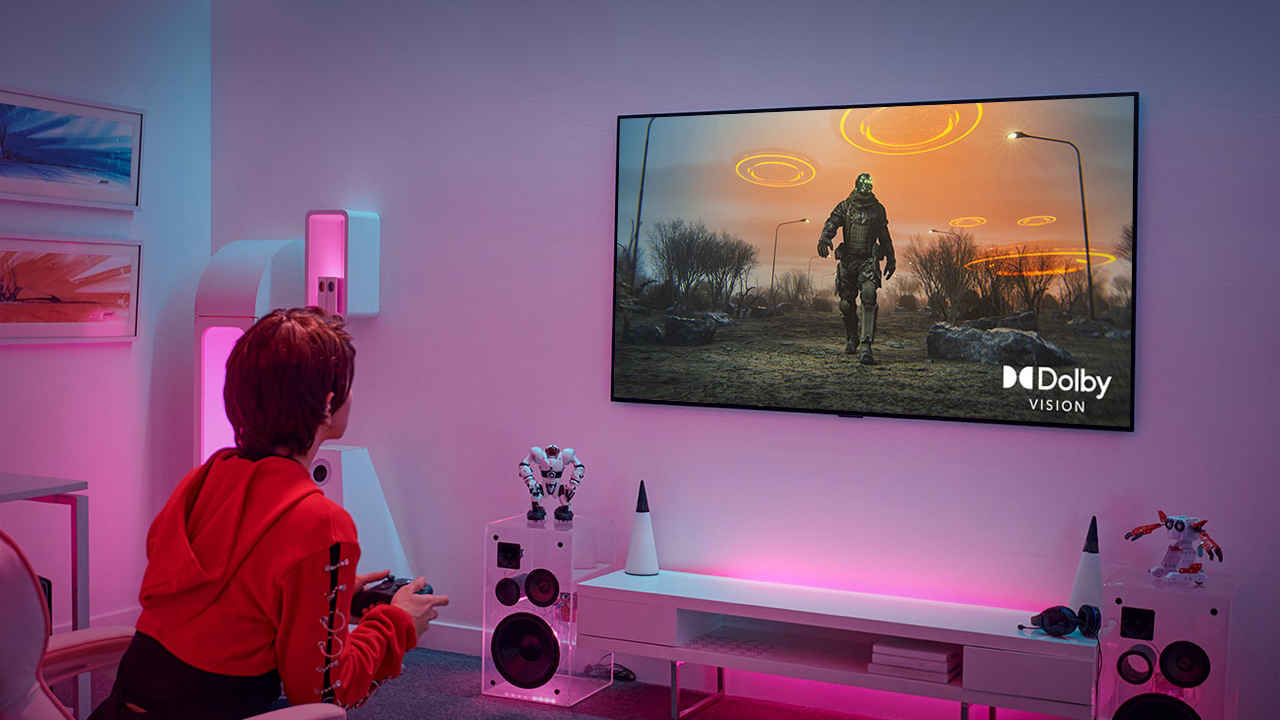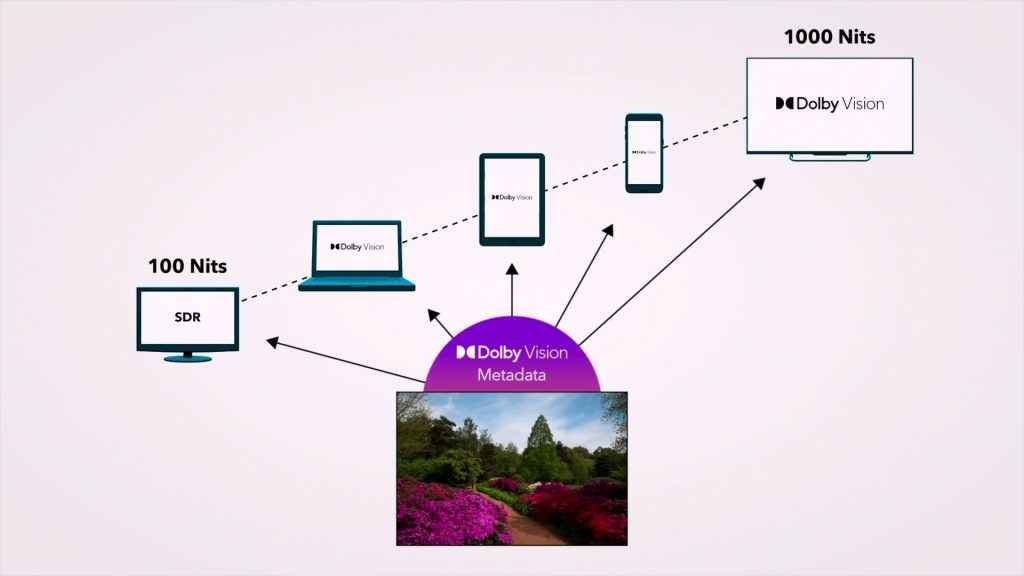Dolby Vision vs Dolby Vision IQ vs HDR10: Here’s everything that you should know!

Dolby Vision has emerged as a leading HDR format, widely available across TVs spanning affordable to premium price segments. To effectively compare two HDR TVs, it’s crucial to grasp the fundamentals of Dolby Vision and how it distinguishes itself from standard HDR.
 Survey
SurveyWhy does Dolby Vision matter in your home theatre setup? What are the factors you need to look at for the best Dolby Vision experience? Here we will try to understand what Dolby Vision is in detail and answer all related questions that you might have.
What is HDR?
To understand Dolby Vision, we first need to understand what is HDR or High Dynamic Range.
The dynamic range of a display is indicated by the number of luminance levels it can produce, from the darkest to the brightest, in a single frame. It is typically measured in stops, where each stop represents a doubling of brightness. For instance, a display with a 12-stops dynamic range can provide a more impactful HDR experience than one with a 7-stops range.
Realistically, high-end digital cameras can capture around 14-15 stops of dynamic range, but the usable range with good quality (low noise) is typically closer to 8-10 stops.
Also Read: What is Apple EDR? How is it different from regular HDR?
Simply put, HDR enables your TV to display both dark shadows and bright highlights in the same scene, making the content appear more realistic. For example, when watching a sequence with a bright sun in the sky and a person sitting in the shade of a tree, an HDR TV can simultaneously display the sun at, say, 1000 nits and the shaded area at 70 nits.
In comparison, SDR content is mastered at 100 nits brightness (about 6 stops). This gives little scope for contrast between bright and dark regions. If you brighten the display on which you are watching beyond 100 nits (which is mostly the case), both the shadow and highlight regions get brightened.
Going into some technical details, HDR archives this dynamic range using a different tone curve (also called electro-optical transfer function) than Gamma 2.4 or Gamma 2.2 which is used for SDR. It uses Perceptual Quantizer or SMPTE ST 2084 transfer function that technically supports 0.0001 nits black point and up to 10,000 nits peak brightness.
Also Read: What are wide colour gamuts like DCI-P3 and why can they be misleading?
Apart from this difference in dynamic range, HDR content is also differentiated from SDR by using a wider colour gamut and higher bit depth.
The current standard for HDR content is 10-bit with DCI-P3 colours mapped in BT.2020 colour space. Most content is mastered for 1000 nits peak brightness but occasionally there are movies mastered at 4000 nits like The Great Gatsby and The Angry Birds Movie, or even higher.
Also Check: RGB to Tandem OLED – 8 Different Types of OLED Display Technologies You Should Know About
Dolby Vision vs HDR10 vs HDR10+: Tone mapping and Metadata
TL;DR – Dolby Vision uses Dynamic Metadata which allows it to specify attributes like the brightest pixel, darkest pixel and average light level on a scene-by-scene or a frame-by-frame basis resulting in a more refined experience. On the other hand, HDR10 specifies maximum content light level and maximum frame light level for the entire content.
HDR10+ also offers dynamic metadata and is also royalty-free. However, it is far behind in adoption as compared to Dolby Vision.
Now, the problem is that TVs don’t have the same capabilities as the mastering monitors that professional studios use to grade movies and cost a fortune. Most consumer TVs struggle to even hit 1000 nits of peak brightness and might not support as wide a colour gamut. So, to do justice to the HDR content, the TV tone maps the brightness, contrast and colours within its individual display characteristics.
Let’s say you have a mastering monitor with a peak brightness of 1000 nits, and you’re working on a scene with a sun that’s supposed to be at that peak brightness. The sun is the brightest object in the scene, with a value of 1000 nits. If your TV supports a maximum of 500 nits of peak brightness, the tone mapping algorithm reduces the brightness of the sun from 1000 nits to 500 nits, to match the TV’s peak brightness. The algorithm will also adjust the brightness of the surrounding areas, like the sky and landscape, to maintain a consistent contrast ratio.
This tone mapping can make or break the HDR experience on your TV. Manufacturers have to choose between preserving highlight details or details in bright scenes and maintaining a bright Average Picture Level bright APL (Average Picture Level) or keeping the overall image bright and punchy.
Also Read: What are MicroLED displays? How are they better than OLED or mini LED displays?
This information regarding the primaries of the mastering monitor is conveyed to the TV via Metadata. HDR10 has static metadata which specifies the maximum brightness of the entire content (MaxCLL) and the average brightness of the brightest frame (MaxFLL) in the content. This means the entire tone mapping for a movie that you are watching will be defined by these two values.
Dolby Vision, on the other hand, has dynamic metadata and can change these values several times for content. In fact, content creators can specify light level values on a scene-by-scene (shot-based) or frame-by-frame (frame-based) basis! If graded properly, this results in a much more refined HDR experience as your TV can tone map bright scenes and dark scenes differently.

Apart from light levels, Dolby Vision metadata carries a range of additional parameters that can be used for more detailed control. Colourists have the option to create multiple ‘trim passes’ during post-processing where they can manually configure metadata to help content easily adapt to different tiers of target displays while staying as true to creative intent as possible.
This dynamic metadata is essentially the main difference between Dolby Vision and Regular HDR10. HDR10+ is another format that offers dynamic metadata but Dolby Vision is by far more popular and HDR10+ content remains scarce.
There are a few other differences too, like Dolby Vision supports 12-bit colour and is not royalty-free, unlike other popular HDR formats like HDR10, HDR10+ and HLG.
Some Dolby Vision content (Profile 8.1) comes with a base HDR10 layer as well. If your TV doesn’t support Dolby Vision then the content is played back as HDR10.
Also Read: Best Mini LED TVs to buy in India
What is Dolby Vision IQ
TL;DR – Dolby Vision IQ is a high-tier Dolby Vision which offers two additional features – Light Sense and Automatic Playback Optimization. Dolby Vision IQ can optimize light level based on ambient lighting.
Dolby Vision IQ adds a new set of premium features that enable TV manufacturers to differentiate their high-end offerings into a different tier. It adds some intelligent features that can help the TV stay true to the creator’s intent even with changes in room lighting.
This is needed because HDR Content is mastered in a dark room and is meant to be viewed in a dark room with an ambient brightness of 5 nits or lower for the most accurate representation. However, in practice, most people use their TVs in well-lit living rooms and in such lighting our eyes can not catch all fine dark details.
Dolby Vision IQ offers two new features – Light Sense and Automatic Playback Optimization. As the name suggests Light Sense analyses data from the TV’s ambient light sensor and Dolby Vision metadata to optimize HDR experience according to the changing ambient lighting.
Automatic Playback Optimization allows content creators to tag their content type via metadata. The content can be marked as Default, Movies, Game, Sport, or User Generated Content. This information is then used to optimize factors such as white point, frame rate, noise reduction and sharpness according to the content type.
For example, “Movie” content requires minimal post-processing, while “User-Generated Content” can benefit from more extensive processing to overcome consumer camera limitations.
If your TV does not support Dolby Vision IQ technology, the new L11 content type metadata will be disregarded. Samsung’s answer to Dolby Vision IQ was HDR10+ Adaptive which makes similar adjustments to HDR tone mapping based on ambient room lighting.
Also Read: QNED vs QLED vs OLED TVs: What’s the difference?
Dolby Vision FAQs
Now that we have explained what Dolby Vision is, let’s address some Dolby Vision FAQs
Question – What is the difference between TV-led Dolby Vision (Standard mode) and player-led Dolby Vision (Low latency DV)?
Answer – In player-led Dolby Vision (Low Latency DV), the source device (such as a Blu-ray player or streaming device) handles the Dolby Vision processing instead of the TV. In TV-led or display-led Dolby Vision (Standard mode), the TV processes the Dolby Vision content, which is typically said to result in a better viewing experience.
TV OEMs and Dolby often do not specify which type of Dolby Vision processing is supported on specific TV models. However, for most practical purposes this should not make a major difference if you have purchased your Dolby Vision TV in the last few years since your TV will have support for the new Low Latency DV format.
Question – Is Dolby Vision content supported on Social Media Apps?
Answer – Some social media apps allow consumers to upload and view Dolby Vision content on compatible devices. These include Vimeo and Moj in India, and Bilibili and Weibo in China.
Question – Do Dolby Vision TVs require calibration?
Answer – Yes, it is a myth that Dolby Vision being an end-to-end solution makes adjustments for TV calibration. For the best experience, you will need to calibrate your TV.
Question – Is Dolby Vision on Blu-rays better than Dolby Vision on streaming services and OTT apps?
Answer – Yes, Dolby Vision on Blu-rays offers a much higher bitrate and thus offers higher quality.
What about Dolby Vision content created on iPhones and Android phones?
Dolby Vision content created on iPhones and a few compatible Android smartphones is based on Profile 8.4 designed for direct distribution and playback. Profile 8.4 has HLG as the base layer instead of HDR10 which uses a slightly different transfer function than PQ or SMPTE ST 2084 which is designed to be compatible with both SDR and HDR displays and is thus highly backward compatible.
Question: What is Dolby Vision Profiles?
Answer: Dolby Vision Profiles describe the video codec and set of coding techniques used to encode a Dolby Vision video. Consumers don’t really have to bother with what Dolby Vision profile is being used.
The latest is Dolby Vision Profile 20 which is used for 3D Stereoscopic Dolby Vision videos for AR/VR headsets.
Question: Why does my Dolby Vision picture look so dark?
Answer: Dolby Vision may appear too dark due to limitations in your TV display or improper tone mapping. While Dolby Vision offers a wide dynamic range, allowing for deep blacks and high peak brightness to create a realistic image, some TVs may struggle to handle this wide dynamic range. To address the issue, you can try switching between Dolby Vision modes, such as Dolby Vision Dark or Dolby Vision Bright (if offered by the TVs). Some streaming devices like the Fire TV stick and Apple TV provide the option to disable HDR altogether, which may be helpful when watching predominantly dark content.
Deepak Singh
Deepak is Editor at Digit. He is passionate about technology and has been keeping an eye on emerging technology trends for nearly a decade. When he is not working, he likes to read and to spend quality time with his family. View Full Profile